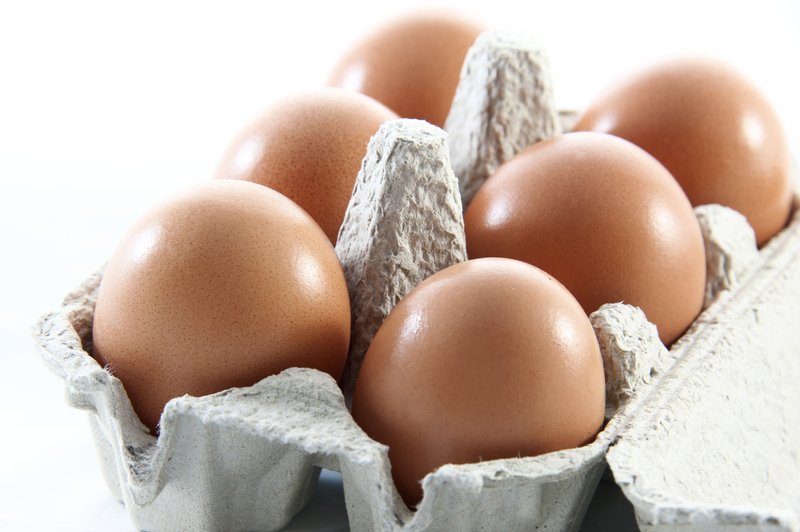20 Foods You Can Eat Past Their Expiration Dates

No one wants to eat rotten, moldy, or stale food. It tastes gross and can lead to food poisoning. So, if you’re looking at a food in the fridge that doesn’t look, smell, or taste right, please, just toss it. But what if you see a food that’s just past its “Use By,” “Best By,” “Sell by,” or “Expiration” date? How accurate are those terms?
Interestingly, none of those terms refer to food safety. Instead, they indicate when foods are at their best or peak flavor, and they’re only rough estimates. What’s more, none of them are regulated (with the exception of baby formula). So, the quality of those foods may still be as good, or they might be starting on a slow slide, so are not as fresh or flavorful.
Even if foods are still “good” according to the dates listed on the label, if they haven’t been stored properly, they may not be. For example, even fresh milk will go bad if it isn’t refrigerated in a timely manner.
So, if there are no hard and fast rules to follow when it comes to whether or not you should trash your food or eat it, how can you tell?
What is Shelf Life?
The first step to consider for shelf life is how likely the food is to grow bacteria. Foods, in general, are more susceptible to bacterial growth with moisture and warmth. (That’s why you don’t want to eat a potato salad after it’s been sitting outside in the heat at a picnic for more than an hour.) Foods that are higher in carbs and protein, that also contain moisture, are the most vulnerable. Think dairy, fish, milk, eggs, meat, cooked grains, many vegetables and fruits. Some condiments also fit into that category, mayo being one of the worst once opened. More acidic sauces (such as vinegar dressings), on the other hand, tend to be more resistant.
To help stave off bacteria and thus increase shelf life, foods can be refrigerated, frozen, canned, or left raw without moisture (such as beans and grains). Freezing foods is one of the best ways to prevent bacterial growth. And many foods are safe to eat even years later. They likely, however, will no longer taste all that great as flavor and texture deteriorates over time.
How Soon Should You Toss?
Instead of relying on any of the best by dates, it’s better to look at the foods to ensure they still smell, feel, and look right. When milk is spoiled, it smells sour; when the meat has gone, it develops a pungent smell and may produce a green tint and feel slimy. Yuck! When fruits and veggies start to go bad, color and texture change, and they can start growing mold.
Even canned food has some tell-tale signs. For example, if a can is dented, distorted, swelling, or rusting, and especially if the lid or seal is broken, it’s probably best to just toss it. This is especially true if the color or smell is off or if it looks foamy or moldy. (Please, don’t eat it!)
BREAKING: Forget Taking Collagen, Try This 21-Second Trick for Healthier Skin & Hair Instead
20 Foods You Can Eat Past Expiration Dates
Here are some general guidelines for common foods to keep in mind:
1. Eggs
Eggs can last up to five weeks past their expiration date as long as they’re kept in the fridge at 40 degrees F. Fresh eggs in general taste the best. And you’ll want to avoid any eggs that have developed a sulfur smell or fail a float test—if the egg sinks in a glass or bowl of water, it’s still fresh; if it floats or tilts upward, it’s old).
If you like your eggs hardboiled, they can last about a week in the fridge. So, if you’re into meal prep, don’t prepare more than you will consume each week.
2. Hard Cheeses
Cheeses like parmesan, asiago, and Romano are likely safe to eat even if they start to show signs of aging and can last weeks after their expiration date. Even if they show signs of mold (typically white or blue-green), you can use a clean knife to scrape or cut off the affected parts, and the remainder will be safe to eat. Hard cheeses and semi-hard cheeses last much longer than soft cheeses simply because of the lower moisture content. If you find mold on soft cheeses, just toss them.
3. Milk
The most important tell for how fresh your milk is is the smell. Give it a whiff, and if it smells sour, it’s gone bad. It can take up to a week after the expiration date. You won’t want to drink sour milk past a small sip or two as drinking large amounts can cause digestive stress. However, if it has just started to turn, it doesn’t need to be tossed.
Slightly spoiled milk can be used for baking, in soups or stews, as part of salad dressing, to tenderize meat, fish, or whole grains, or even to make cheese. It can also be added to a bath to soften skin or used as a DIY ingredient for a face mask with some essential oils to help hide the smell. That said, if it’s starting to curdle, is growing mold, or is slimy, it is time to trash it.
4. Yogurt
Many people mistakenly believe yogurt has a short lifespan because it’s dairy-based. However, it too can have a much longer shelf-life—up to 3 weeks past expiration if not opened. This is because the probiotics and lactic acid naturally found in yogurt fight off bacterial growth. If your yogurt is a bit dated, you may notice that the whey separates from the curd, but unless there’s any mold or discoloration, it’s likely still good to eat.
5. Raw Meat and Poultry
While these types of foods last mere days in the fridge, you can safely store them much longer in the freezer. Ground meat can last between three and four months. And a whole chicken or turkey can last up to a year. That said, the longer they’re stored, the more likely they’ll begin to dry out and may not taste as good.
6. Fish
Again, if you want it to last more than a couple of days, you’ll want to transfer your fish to the freezer, where it can last between six and nine months. Smoked fish, surprisingly, doesn’t last as long—only around three to six months. But if you buy your fish already commercially frozen, it can last longer—up to a year.
What about canned tuna or salmon? You have ages… unopened canned fish can last up to two to five years past its expiration date.
7. Frozen Fish and Vegetables
Frozen fruits and vegetables are a convenient way to add nutrition to the diet. And fortunately, they keep for a long time. As long as they’re frozen and unopened, many last up to 10 months past their best by date.
8. Bread
Many breads can last around a week past their expiration date when stored in a cool, dry place. You can also really extend the shelf life to up to six months when frozen, though it may not taste as fresh and flavorful. Keep an eye out for any mold, though, especially if in a humid environment. Homemade breads, and breads found at bakeries, may not last as long as they don’t have added preservatives. Keep them in the fridge or freezer to help prolong their shelf life.
9. Canned Vegetables
Canned veggies are one of the longest-lasting foods out there. Manufacturers tend to give best by dates years into the future. And these foods are still edible up to two years longer as long as the foods aren’t opened. While the flavor may degrade over time, foods like beans, mushrooms, and chili can all last long past their expiration date.
10. Tomato Sauce
Whether it’s a rich marinara sauce or tomato paste, you can expect it to last months past expiration. This is because tomatoes are very acidic, which helps prevent spoilage. Even an open jar of sauce can last weeks if it’s kept in the fridge with the lid on. Ketchup, another popular tomato-based product, can last up to six months when refrigerated. Unopened, it can be stored in the pantry for up to a year.
11. Root Vegetables
Most of us no longer have root cellars, which is too bad as many roots, including carrots, beets, parsnips, and potatoes, can last several weeks in cool, dark environments, with little change to their taste or texture.
12. Leafy Greens
While most fresh produce doesn’t provide a best by date, bagged salads and greens often do. While wilting greens aren’t all that appetizing, you can give some greens new life by submerging them in ice water for five to 10 minutes. They can also last longer after being washed and spun in a salad spinner and stored in the fridge.
13. Nuts
Nuts can last weeks or even months past their expiration date because they’re low in moisture. However, they’re also high in fat, which can go rancid over time. No matter what the expiration date on the package says, always give your nuts a sniff, and avoid them if they smell bad (especially if they have a paint-like odor or smell harsh or bitter), have darkened or look oily, or if there’s any water damage to the packaging. To help prevent nuts from going rancid more quickly, they can also be stored in the fridge (for up to six months) or freezer (for up to a year) in a sealed container.
14. Dry Cereal
Because of the lack of moisture, cereals and granola can last weeks or even months past their expiration date as long as they’re in sealed containers. Beyond that, though, and they may begin to start to taste stale and unappetizing. And if cereals are exposed to the air, they can go stale fast. Again, use your senses to help you decide if it’s still good.
What about prepared cereals (like overnight oats)? Those keep only four to five days, so if you’re making a batch, keep that in mind, so you don’t make more than you’ll eat over the next several days.
15. Dry Pasta
Another food that can be eaten well past the expiration date is pasta. Because it’s dry, it can last up to two years past. That includes whole grain and bean pastas as well as other grains such as rice and oats. Quality, however, may be affected, and they may lose some of the flavor over time.
This isn’t the same for the fresh pasta found in refrigerated sections. Those are good for just up to five days beyond the expiration date unless frozen. In the freezer, it can last for up to eight months.
16. Dried Beans
As long as they’re stored in a cool, dry place, beans, lentils, and other legumes can also last nearly indefinitely. They’re safe to eat even after their freshness has left and provide loads of nutrition.
LIMITED TIME OFFER: Get Ageless Turmeric, Our Highly-Bioavailable Turmeric & Ginger Supplement, As Low As $14
17. Baking Ingredients
Dry ingredients used for baking like flour, baking soda, and baking powder all have a long shelf life, and they can last even longer by a month or two, as long as they’re stored in a cool, dry place. Just double-check for signs of pests, moisture, or strange smells, and avoid any foods that have them.
18. Salt
This is one food that could last indefinitely as it fights off bacterial growth. That’s why it’s so often used as a preservative—it’s really good at staving off growth. Again, however, watch for any moisture, pests, or strange smells.
19. Honey
Another food that can last nearly indefinitely is honey. This low-moisture, acidic form of sugar prevents bacterial and other microorganism growth. As long as you keep your honey in a cool, dry space in a sealed container, it can last years, if not forever.
20. Sugar
Sugar is another item that won’t spoil. However, if you do have sugar sitting in the back of the pantry, check it before using it to ensure it hasn’t been contaminated with moisture or pests. And for the best flavor, it’s recommended to replace sugar every two years.
Expiration Dates and Food: Recap
Food waste is a problem, and we tend to throw out food that’s perfectly good to eat. Now you know some foods that can last longer (maybe way longer) than they may say on the label.
What about foods that are still safe to eat but may have gotten lost in the back of the freezer and have been there since who knows when? They may still be usable. For example, if you find a package of frozen ground meat, it can be used with a generous amount of spices to compensate for the loss of flavor and use it for chili or tacos.
That being said, when in doubt, throw it out—or preferably compost it if possible. If the food looks or smells off to you, or if you’re just unsure, don’t take the risk. It’s better to be safe than sorry.





 7 Signs Your Body is Seriously Low on Collagen (not just wrinkles)
7 Signs Your Body is Seriously Low on Collagen (not just wrinkles) Health Expert: "Turmeric Doesn't Work (unless...)"
Health Expert: "Turmeric Doesn't Work (unless...)" 3 Warning Signs Your Probiotic Supplement is a Total Waste
3 Warning Signs Your Probiotic Supplement is a Total Waste

